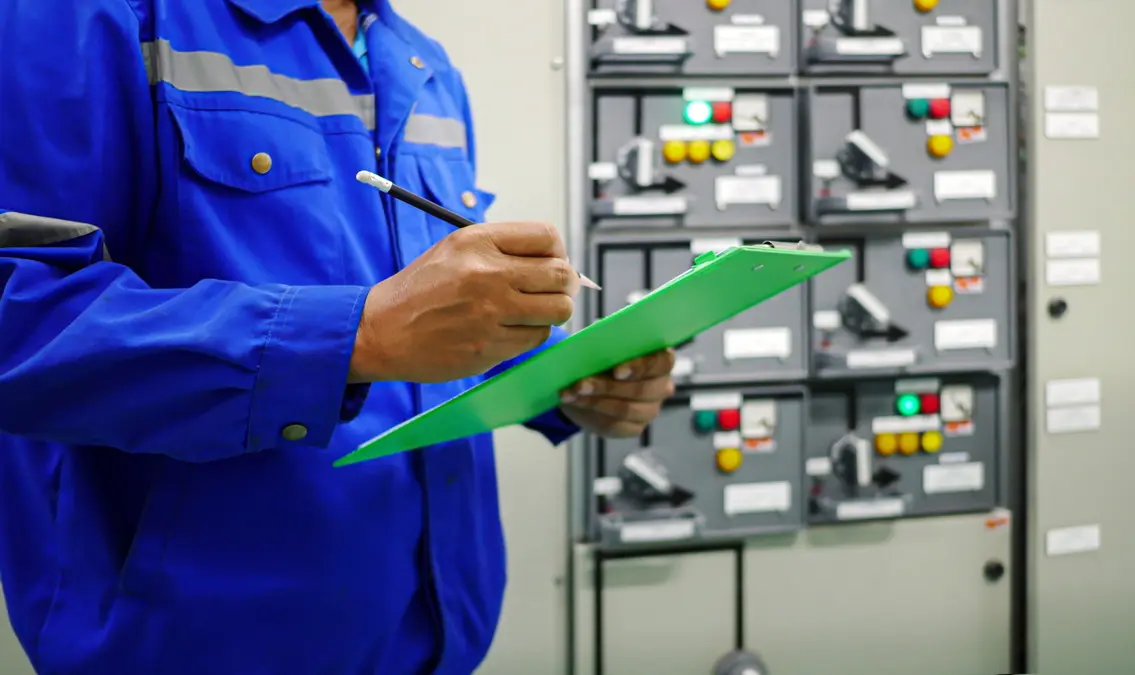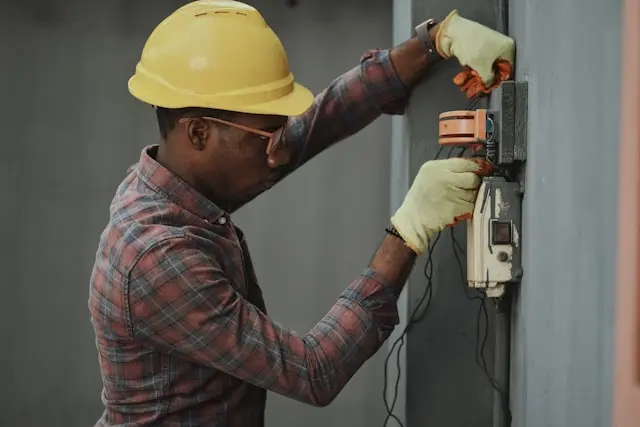The Expert’s Facility Inspection Checklist (with PDF Download)


Regardless of the number or size of your facilities, regular inspections are a must for both safety and efficiency. Problems often start as minor issues that, left unaddressed, become expensive and disruptive to resolve.
Regular inspections help organizations spot and fix potential hazards, comply with regulations, and stay productive.
But what should be on your facility inspection checklist? Failing to audit all areas of your facility could put you at risk of unscheduled downtime or even increase legal liability.
In this guide, we’ll share a comprehensive, expert-vetted facility inspection checklist for better facility inspections.

Whether you conduct them to fulfill regulatory requirements or to ensure safety, there are so many benefits to performing regular facility inspections.
Faulty wiring, aging equipment, fire risks, and structural issues are just some of the problems you might encounter during an inspection. Without regular inspections, these issues could fall by the wayside.
Unaddressed, they can cause catastrophic accidents or fatal incidents in the workplace. You keep everyone in your facility safe by conducting regular inspections and acting on inspection reports.
Facility inspections require some resources upfront, but they reduce costs in the long term. Identifying minor issues early prevents them from becoming bigger, more costly repairs.
For example, a minor roof leak can become a much bigger problem if it isn’t addressed ASAP. By inspecting your facilities, you’ll spot more of these minor issues, take action, and extend the lifespan of your buildings and equipment.
The cost of conducting facility inspections pales in comparison to the costs of falling out of compliance. Your facility must comply with various health, safety, and environmental regulations. Routinely inspecting all facilities ensures you cover your legal bases and prevents penalties for non-compliance.
Facility inspections take time, but thorough audits save both money and hassle. Follow this expert facility inspection checklist to resolve issues before they disrupt your business.
First, walk through the facility to inspect all structures. This step includes main buildings as well as storage areas, parking lots, or outdoor structures. Look for wear and tear on the roofs, walls, windows, or doors. Address any cracks or leaks, even if they’re small.
Any issues with these systems can cause serious accidents and disruptions.
Labels and tags are a must for all types of businesses, whether you’re a manufacturer that labels heavy machinery or a white-collar office that tags desktop stations.
Inspect the labels and tags on all equipment. They should be fastened firmly to the equipment and not peel around the edges. Any illegible, fading, or peeling labels also need immediate replacements.
This step is also a good opportunity to check that your labels are up-to-date with regulatory requirements. Camcode labels are designed to last as long as 20 years in many cases. Regulations can change during that time, so double-check that your tags are still compliant.

A secure facility is a safe facility. Test all surveillance cameras and alarm systems. Access controls, like keys or fobs, should also be in working order.
Do a safety check during this step, too. Make sure all smoke detectors and sprinkler systems work. Double-check that fire extinguishers are in the right places and that they’re up-to-date on their inspections.
Lastly, make sure that fire exits are clearly labeled and easily accessible, with nothing blocking the emergency exits.

Facility inspections are a proactive strategy for running a safe, profitable business. The small details count, so run through this checklist to address minor problems before they cause expenses and disruptions down the line.
High-quality labels and tags support healthy communication, proper equipment use, and productivity.
When quality matters, source your labels and tags from Camcode. Our durable materials are 100% customizable and come ready to attach. See the Camcode difference in your facility: request your free sample kit today.

To help you identify potential hazards, maintain compliance with industry standards, and ensure that all critical systems in your facility are functioning properly, we are offering a comprehensive Facility Inspection Checklist available for download in PDF format.
This checklist is designed to streamline your inspection process, enhance safety, and minimize downtime by spotting issues before they turn into costly problems.
[Download The Facility Inspection Checklist (PDF)]
Our Facility Inspection Checklist covers a wide range of areas to ensure every critical component is evaluated:
Ready to take a proactive approach to facility management? Click the link below to access our Facility Inspection Checklist and start conducting thorough, organized inspections today.
[Download The Facility Inspection Checklist (PDF)]
By following this checklist, you can reduce the likelihood of accidents, stay compliant with industry standards, and create a safer, more efficient environment for everyone in your facility.
For more free checklists, check out our Facility Management Checklist.
It depends on a lot of factors. At a minimum, facilities need annual inspections for safety and maintenance. However, quarterly inspections are more common for higher-risk businesses, like manufacturing or healthcare.
Every organization has a different setup, but most facility inspections should look at:
Large facilities will have a facility manager conduct internal inspections. However, it’s not uncommon for external auditors to inspect for regulatory compliance. Some facilities will bring in third-party experts to take a closer look at specialized systems, like electrical or plumbing.
Our sales engineers are experts in automatic asset tracking, tagging and identification,a nd can answer all your questions. Get in touch now.
Lets Talk ›Enter your information and get a free checklist of the top questions to answer to plan a successful asset tagging project for any maintenance tracking or facility management system.